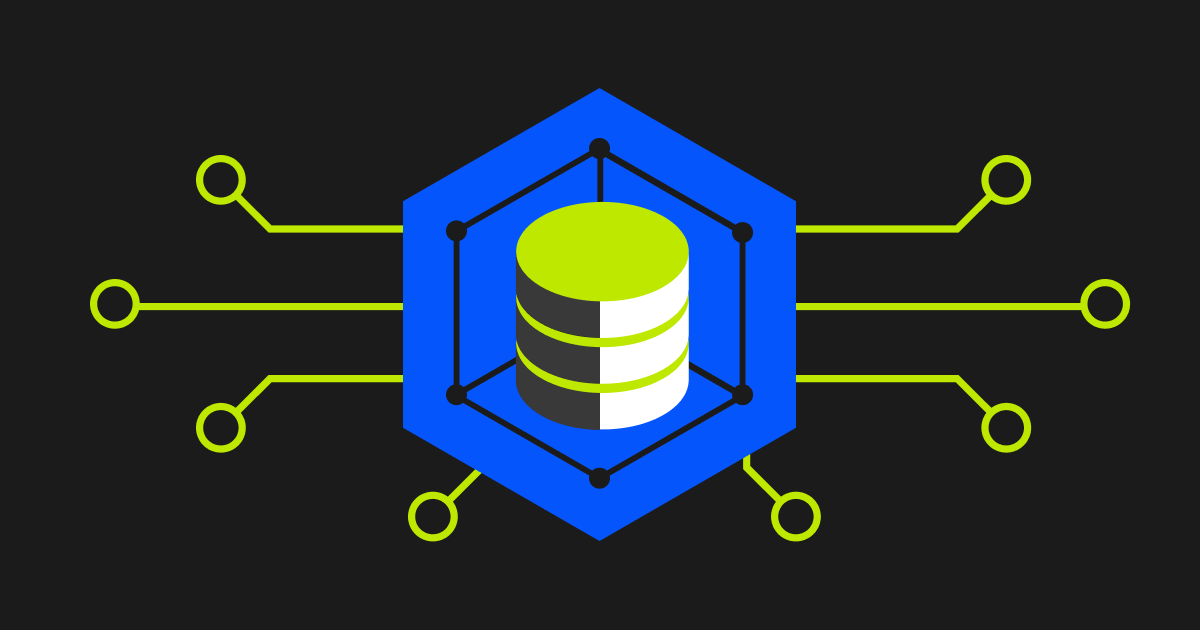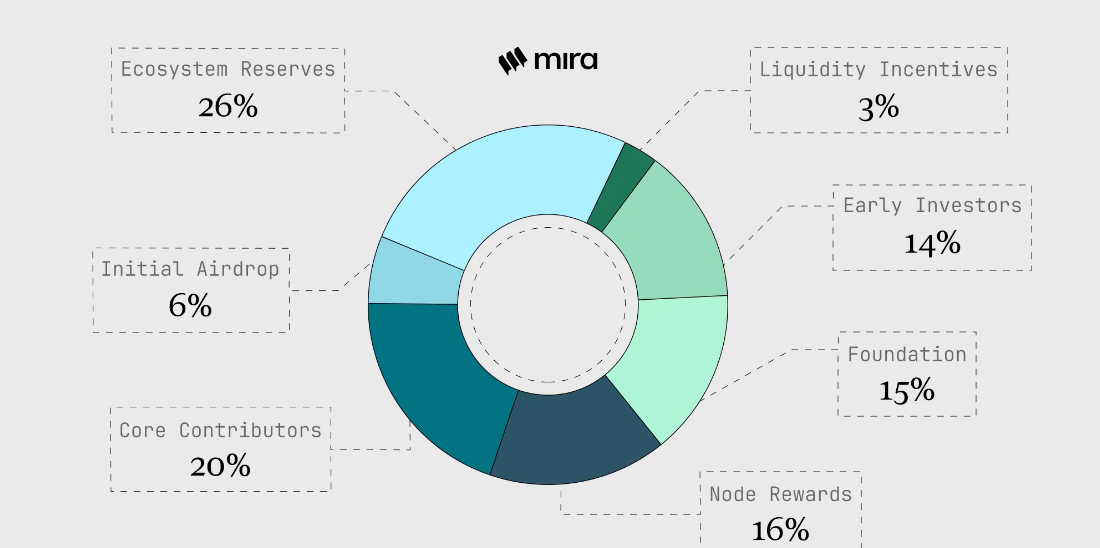The intersection of artificial intelligence and blockchain technology has gained significant momentum in 2025, with Mira Network emerging as a pioneering project addressing AI's most critical challenge: trustworthiness. On September 26, 2025, Mira Network launched its mainnet, accompanied by the distribution of its native MIRA token across major exchanges. This infrastructure project aims to transform how we verify AI-generated content through decentralized validation, positioning itself as a crucial "trust layer" for artificial intelligence systems. With AI hallucinations occurring in 3% to 91% of interactions, depending on task difficulty, Mira's solution arrives at a critical juncture in AI adoption. The network has already demonstrated impressive traction, processing 700 million queries during testing and boasting 4.5 million users with daily transactions of 300 million data tokens. This article explores Mira Network's technology, tokenomics, applications, and future roadmap in the rapidly evolving landscape of verified artificial intelligence.

What is Mira Network?
Mira Network represents a fundamental shift in how we approach AI verification. Rather than relying on single AI models that struggle with inherent limitations, Mira establishes a decentralized network where multiple AI models collaboratively verify outputs through blockchain-based consensus. This approach addresses what researchers call the "training dilemma" - an unavoidable limitation preventing any single model from simultaneously solving hallucinations and biases. When engineers select training data to improve precision and reduce hallucinations, they inevitably introduce bias through their selections; conversely, training on diverse data to reduce bias leads to decreased precision and increased hallucinations.
The network operates through a sophisticated technical architecture that begins with a process called "binarization," which transforms complex AI-generated content into discrete, independently verifiable claims. For example, a compound statement like "Arsenal is a London club that has won the European Champions League three times" would be converted into separate verifiable components: (1) "Arsenal is a London club" and (2) "Arsenal has won the European Champions League three times". These claims are then distributed to independent nodes running different AI models (including GPT-4o, Llama 3.1 405B, and Claude 3.5 Sonnet) for evaluation.
Mira's hybrid Proof-of-Work/Proof-of-Stake consensus mechanism is specifically designed for AI validation. Unlike traditional blockchain networks, where PoW involves solving random cryptographic puzzles, Mira transforms verification into standardized multiple-choice questions that require actual reasoning rather than computational brute force. Nodes must stake value to participate in validation, and those consistently deviating from consensus or showing patterns suggesting random responses rather than actual reasoning face economic penalties through stake slashing. This mechanism ensures that attempting to attack the system becomes economically impractical while maintaining network security as long as honest operators control most of the staked value.
MIRA Token
Total Supply: 1,000,000,000
Network: Base (ERC-20)
Initial Circulating Supply: 19.12% at TGE
The MIRA token serves as the economic backbone of the Mira Network ecosystem, facilitating transactions, incentivizing participants, and enabling governance. With a total supply of 1 billion tokens, the distribution is strategically allocated to ensure long-term sustainability. The allocation includes 26% for ecosystem reserves, 20% for core contributors, 15% for the foundation, 14% for early investors, 16% for future rewards, 6% for initial airdrop, and 3% for liquidity incentives. At token generation, the initial circulating supply was 191,244,643 MIRA, representing 19.12% of the total supply.
The MIRA token plays several crucial roles within the network. It serves as the medium of exchange for accessing verification services, compensating node operators for their computational contributions, and distributing rewards to participants who maintain network integrity. Additionally, the token enables governance rights, allowing holders to participate in key decisions regarding network upgrades and parameter adjustments.
Mira Network App
Mira Network offers a mobile application that allows users to interact with the platform conveniently. The app is designed to make participation easy, even for non-technical users, and provides access to a wide range of features:
Mining Lumira Coins: Users can earn Lumira Coins, a community-driven stablecoin, by participating in network activities. This allows users to gain rewards while contributing to the platform’s security and validation processes.
Tokenized Airdrops: The app provides opportunities for users to receive tokenized shares in startups and earn dividend payouts, creating a decentralized investment ecosystem.
Blockchain-Powered Education: Mira Network offers free courses and NFT-based diplomas, securely stored on the Mira-20 blockchain. This feature supports skill development and knowledge verification in a decentralized and tamper-proof manner.
Security and Trust: Only verified businesses can tokenize assets or launch projects on the platform, ensuring a fraud-free environment and enhancing overall trust.
Use Cases and Real-World Applications
Mira Network’s decentralized AI verification system has significant potential across multiple industries:
Healthcare:
AI is increasingly used for diagnostics, treatment recommendations, and predictive health analytics. Mira Network ensures that AI-generated medical advice or diagnostic outputs are accurate and verifiable, reducing the risk of misdiagnosis or treatment errors.
Finance:
In trading and financial analysis, AI systems generate market forecasts and trading signals. By validating these outputs, Mira Network enhances trust in automated trading strategies, risk assessment, and investment decisions.
Legal and Compliance:
AI tools can analyze legal documents or regulatory requirements. Mira Network ensures that AI-driven legal analyses are accurate, compliant, and trustworthy, reducing the risk of costly errors.
Education:
By verifying AI-generated educational content, Mira Network supports credible e-learning systems. Students and institutions can confidently rely on AI-assisted learning without fearing misinformation.
AI Research:
Researchers can validate AI models and outputs using Mira Network, improving replicability and reliability in scientific studies.
These applications demonstrate how Mira Network bridges the gap between AI potential and real-world trust, making AI outputs actionable and reliable.
Roadmap and Future Development
Mira Network is actively expanding its ecosystem, with several major initiatives planned:
Mainnet Launch: The platform is progressing toward a full mainnet launch, enabling broader adoption and network security.
Enhanced AI Verification: Continuous improvements in AI claim verification, aiming to handle more complex datasets and higher volumes.
Community Governance Expansion: Introducing advanced mechanisms for decentralized decision-making, empowering token holders to shape the platform’s future.
Ecosystem Growth: Integrating additional applications and services, including DeFi platforms, NFT-based education, and tokenized investments.
Strategic Partnerships: Mira Network is working with AI developers, enterprises, and blockchain projects to expand its ecosystem and utility.
These steps position Mira Network as a leading platform in AI verification, bridging blockchain, AI, and decentralized finance.
Challenges and Considerations
Despite its promising technology and strong launch, Mira Network faces several significant challenges. The competitive landscape in AI verification is intensifying, with numerous projects exploring similar concepts at the intersection of blockchain and artificial intelligence. Maintaining technological superiority while achieving widespread adoption will require continuous innovation and strategic execution.
Regulatory considerations present another complex challenge. As a global project operating in both the cryptocurrency and AI sectors - two areas receiving increased regulatory scrutiny - Mira must navigate evolving compliance requirements across multiple jurisdictions. The network's privacy-preserving architecture, which fragments content into entity-claim pairs and randomly distributes them to nodes, helps address data protection concerns, but regulatory frameworks continue to develop.
Market volatility represents an additional consideration. Like many emerging cryptocurrency projects, MIRA has experienced significant price fluctuations since its launch. These market dynamics can impact network participation and token utility, particularly for stakeholders requiring price stability for operational planning. The impending unlock of $12 billion worth of HYPE tokens in late 2025 could create additional market pressure, though this affects a different project within the same broader ecosystem.
Technical hurdles also remain. While Mira has demonstrated impressive scalability - processing 30 billion tokens daily across its ecosystem applications - maintaining performance while expanding to new use cases and growing its user base will require ongoing optimization. The network's infrastructure partnerships with decentralized GPU providers help address computational demands, but AI verification remains resource-intensive.
Conclusion
Mira Network represents a groundbreaking approach to solving one of artificial intelligence's most persistent challenges: establishing trust in AI-generated outputs. By creating a decentralized verification layer that leverages blockchain consensus across multiple AI models, Mira significantly improves reliability while eliminating single points of failure. The project's mainnet launch in September 2025 marks a significant milestone in the convergence of AI and blockchain technologies, backed by substantial user traction, impressive technical metrics, and growing ecosystem partnerships.
The network's potential impact extends across multiple industries where AI reliability is crucial, from healthcare and finance to legal applications and beyond. While challenges remain in navigating competitive pressures, regulatory environments, and market volatility, Mira's innovative approach to AI verification addresses a critical need in the rapidly expanding artificial intelligence landscape.
As AI systems become increasingly integrated into mission-critical processes, the importance of verifiable, trustworthy outputs will only grow. Mira Network's technology provides a promising foundation for this future, potentially enabling AI systems to operate autonomously in high-stakes scenarios where errors would have significant consequences. For the cryptocurrency and AI communities alike, Mira represents a project worth watching as it develops its technology and expands its ecosystem in pursuit of more trustworthy artificial intelligence.
Reference:
CoinCatch Team
Disclaimer:
Digital asset prices carry high market risk and price volatility. You should carefully consider your investment experience, financial situation, investment objectives, and risk tolerance. CoinCatch is not responsible for any losses that may occur. This article should not be considered financial advice.



